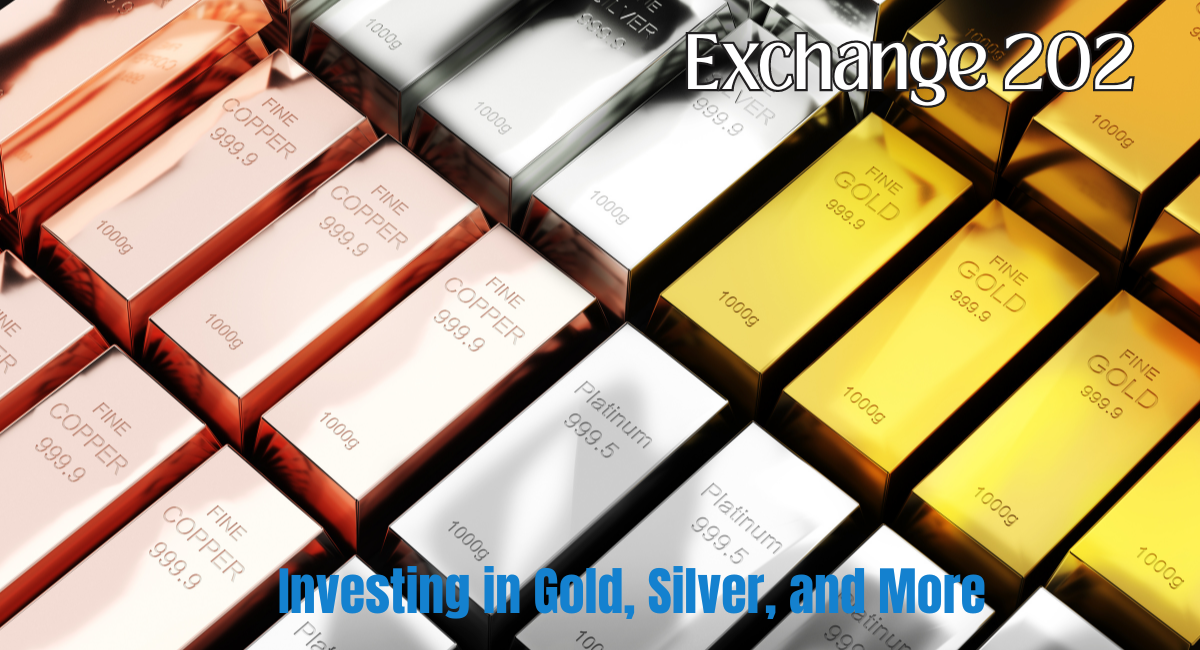Introduction:
Investors and collectors have always loved precious metals. These physical goods have stored value and fueled global economies for ages. Gold and silver are the most famous precious metals, but others are worth investing in for diversification. This essay will cover precious metals investing, from the classics to the obscure.
Reasons to Invest in Gold
Gold: The Everlasting Value Store
Gold is called the “king of precious metals” for good reason. Since it has been valued for thousands of years, investors seeking stability and a buffer against economic unpredictability choose it.
Gold is an excellent long-term investment due to its steady value preservation over time.
Diversification: It reduces investment portfolio risk by diversifying.
Hedge Against Inflation: Gold appreciates when fiat currencies lose purchasing power, making it a good inflation hedge.
Safe Haven: Investors seek refuge in gold during economic and political upheaval.
Liquidity: Their liquidity makes gold coins, bars, and ETFs quickly traded.
Gold Investment Options
Investors have many gold exposure options:
Physical Gold: Buy coins or bars of gold. Gold coins like American Eagle and Canadian Maple Leaf are popular.
Gold ETFs: SPDR Gold Trust (GLD) lets you invest in gold without owning it. These products monitor gold prices and offer liquidity and diversity.
Gold Mining Stocks: Gold mining stocks are another option to invest in gold. This strategy has company-specific risks in addition to gold price risk.
Gold Futures and Options: For more experienced investors, gold futures & options contracts are available, although they are riskier and more complicated.
Silver: The Versatile Precious Metal
Silver, known as “the poor man’s gold,” is a versatile precious metal with attractive investment potential.
Industrial Demand: Consider investing in silver due to its industrial applications in electronics and solar panels, which can boost demand and support prices.
Affordability: Silver is more affordable than gold, making it accessible to more investors.
Historical significance: Silver, like gold, has long been a money and store of wealth.
Volatility: Silver has higher price volatility than gold, delivering higher gains (and risk).
Silver Investment Options
Many ways exist for investors to buy silver:
Physical Silver: Like gold, you can buy silver coins or bars. American Silver Eagles and Canadian Silver Maple Leafs are popular.
Silver ETFs: Shares Silver Trust (SLV) makes investing in silver easy without storage or security issues.
Silver Mining Stocks: You can profit from the silver market’s rise by investing in silver mining stocks. These stocks have industry-specific risks.
Silver Futures and Options: Advanced investors can trade silver futures and options, like gold.
Beyond Gold and Silver: Other Precious Metals
Many precious metals investors focus on gold and silver, but a balanced portfolio should include other metals.
1. Platinum
Platinum is rarer than gold and is used in car catalytic converters. It has typically traded above gold and can hedge currency devaluation. Platinum bars, coins, ETFs, and mining stocks are available to investors.
2. Palladium
Due to supply limits, palladium, another catalytic converter metal, has appreciated. Palladium ETFs and mining stocks are options.
3. Rhodium
Rhodium is uncommon and expensive, mainly used in catalytic converters. Its price has fluctuated but gained significantly. Rhodium is easier to get with specialist knowledge and markets.
4. Copper
Copper is crucial in building and electronics despite not being a precious metal. One may bet on global economic growth. Copper ETFs and mining stocks are options.
Precious Metals Investment Considerations
Before investing in precious metals, consider these factors:
Diversification: Precious metals should be part of a diverse investing strategy. They give stability, but they should be something other than the focus.
Storage and Security: Consider storage and security expenditures when buying actual metals. While some investors store metals at home, others choose third-party vaults.
Transaction charges: ETF management fees, and precious metal taxes should be considered.
Market volatility: Precious metals markets are turbulent. It’s crucial to invest long-term and anticipate price changes.
Exit Strategy: Define your exit strategy before investing. Choose how to sell your precious metals investments.
Market Research: Global economic developments, central bank policies, and geopolitical events affect precious metal prices.
Conclusion:
Precious metals are a unique opportunity to diversify and hedge against economic volatility. Gold and silver are popular due to their history and stability. However, investors may find more prospects by exploring platinum, palladium, rhodium, and copper.
Research, risk assessment, and long-term investment goals are essential when investing in precious metals. To reach your financial goals, precious metals should be part of a well-diversified portfolio.
